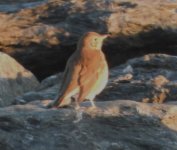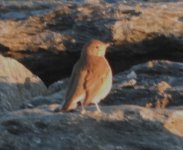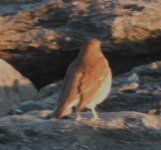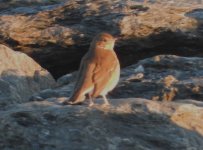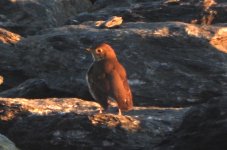
Apologies for the poor pictures, but hopefully good enough that someone can confirm. I saw this bird yesterday (1st Dec) on open rocks by the sea close to Stavanger, Norway. Initially I assumed rock pipit but it didn't behave like typical rock pipits, it was very wary and stayed at a distance before flying off and I can't make the photos any kind of rock pipit either. So song thrush is my next guess, but in an odd habitat in the open by the ocean and I tend to only see and hear them in the summer months. Or is this not unusual in winter, in cold conditions as we have had for the past week? Thanks for your help




